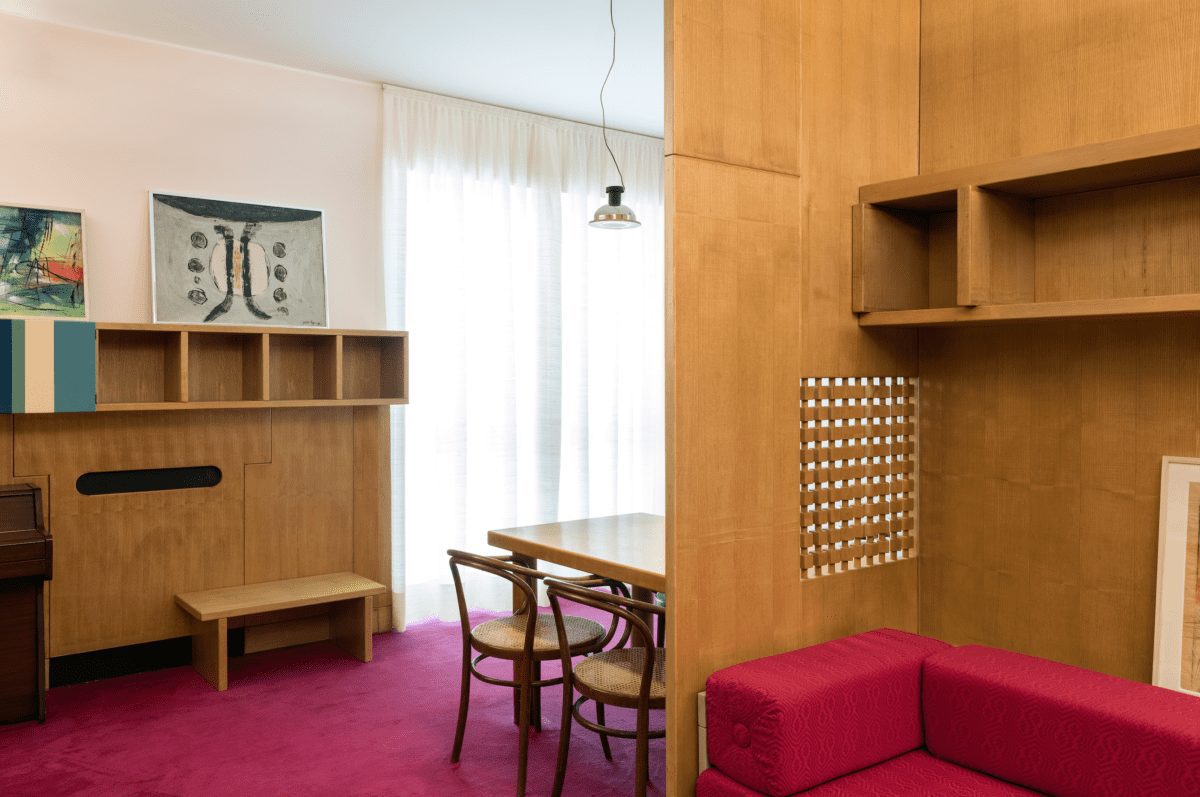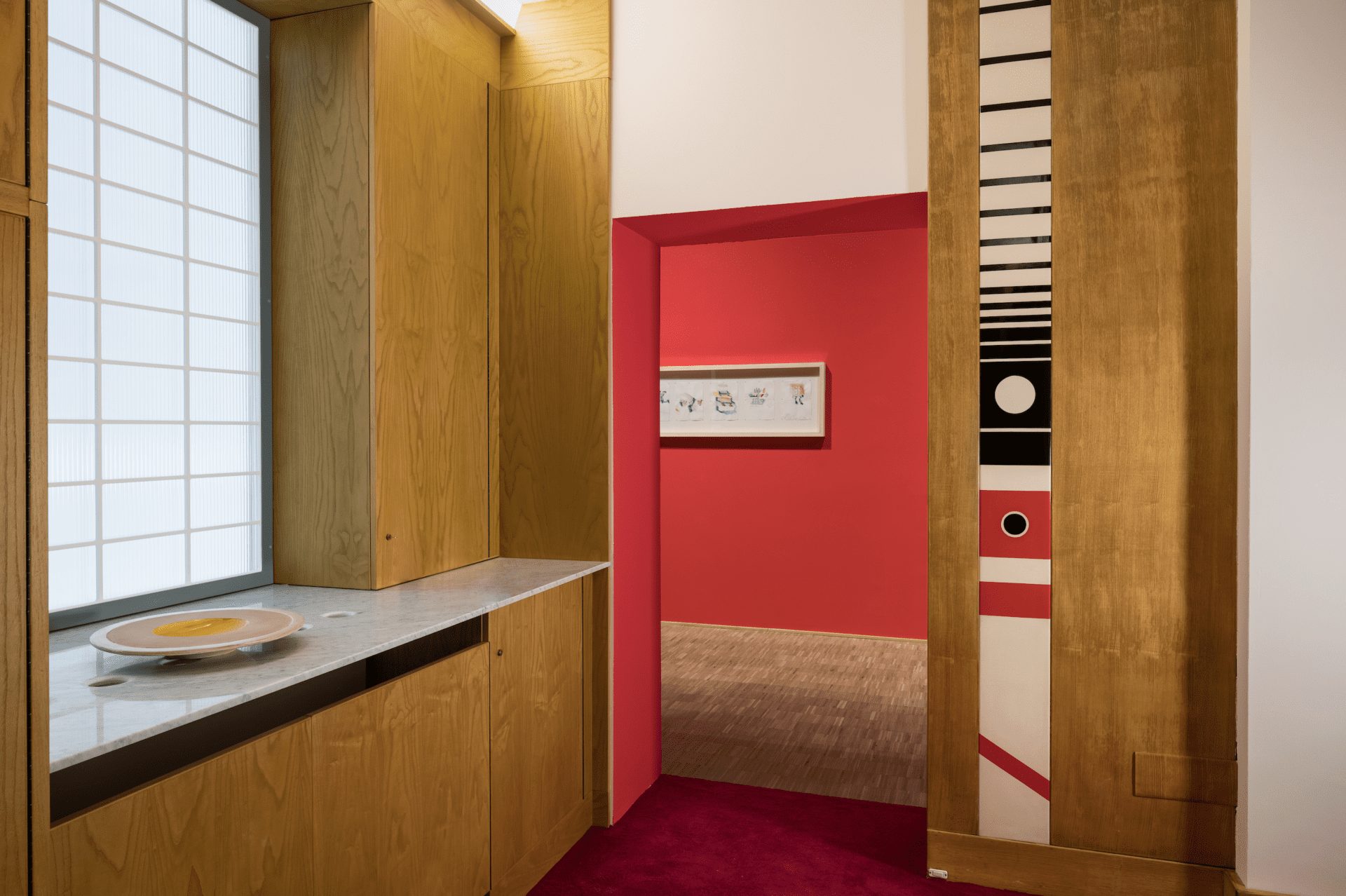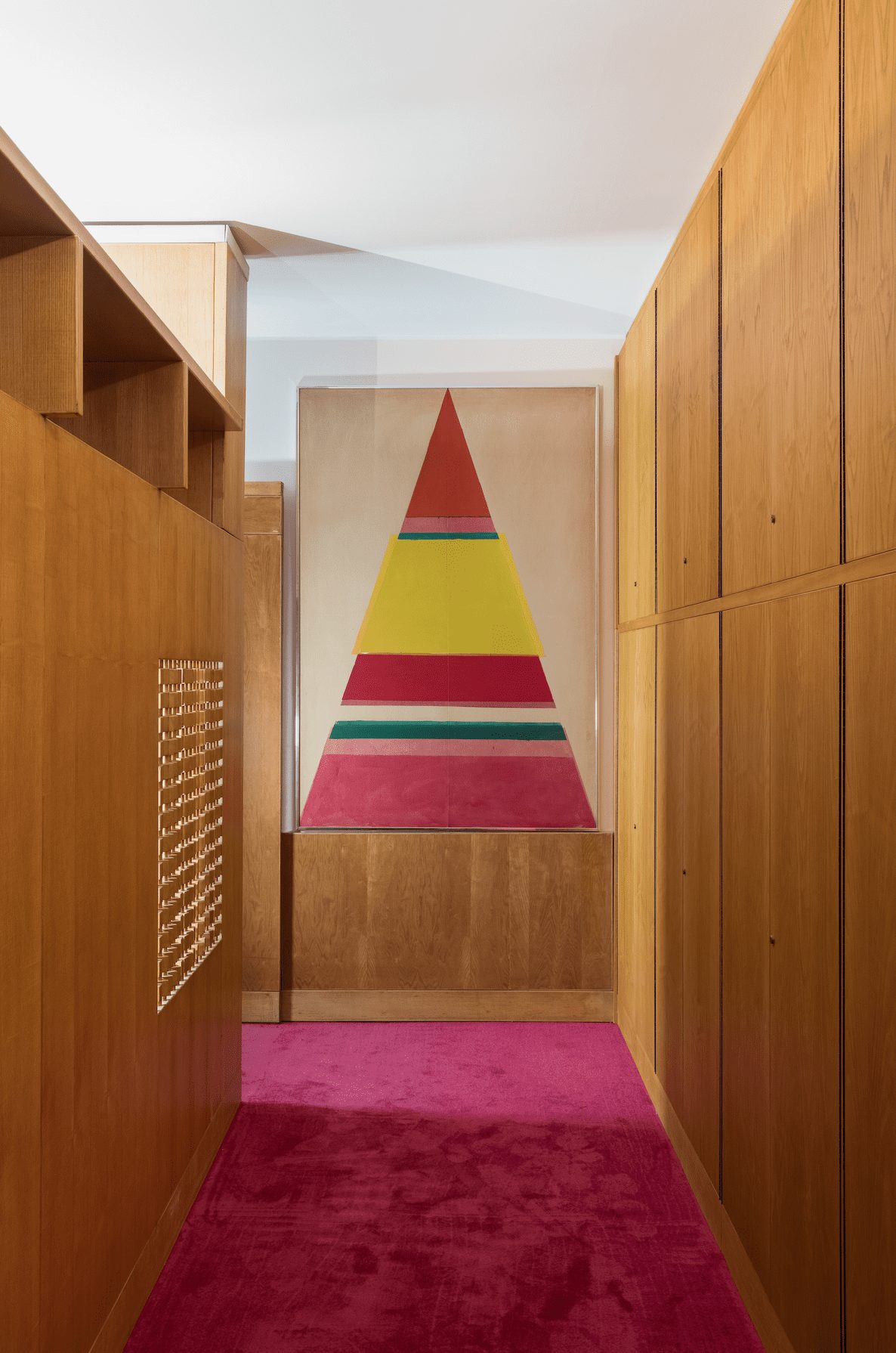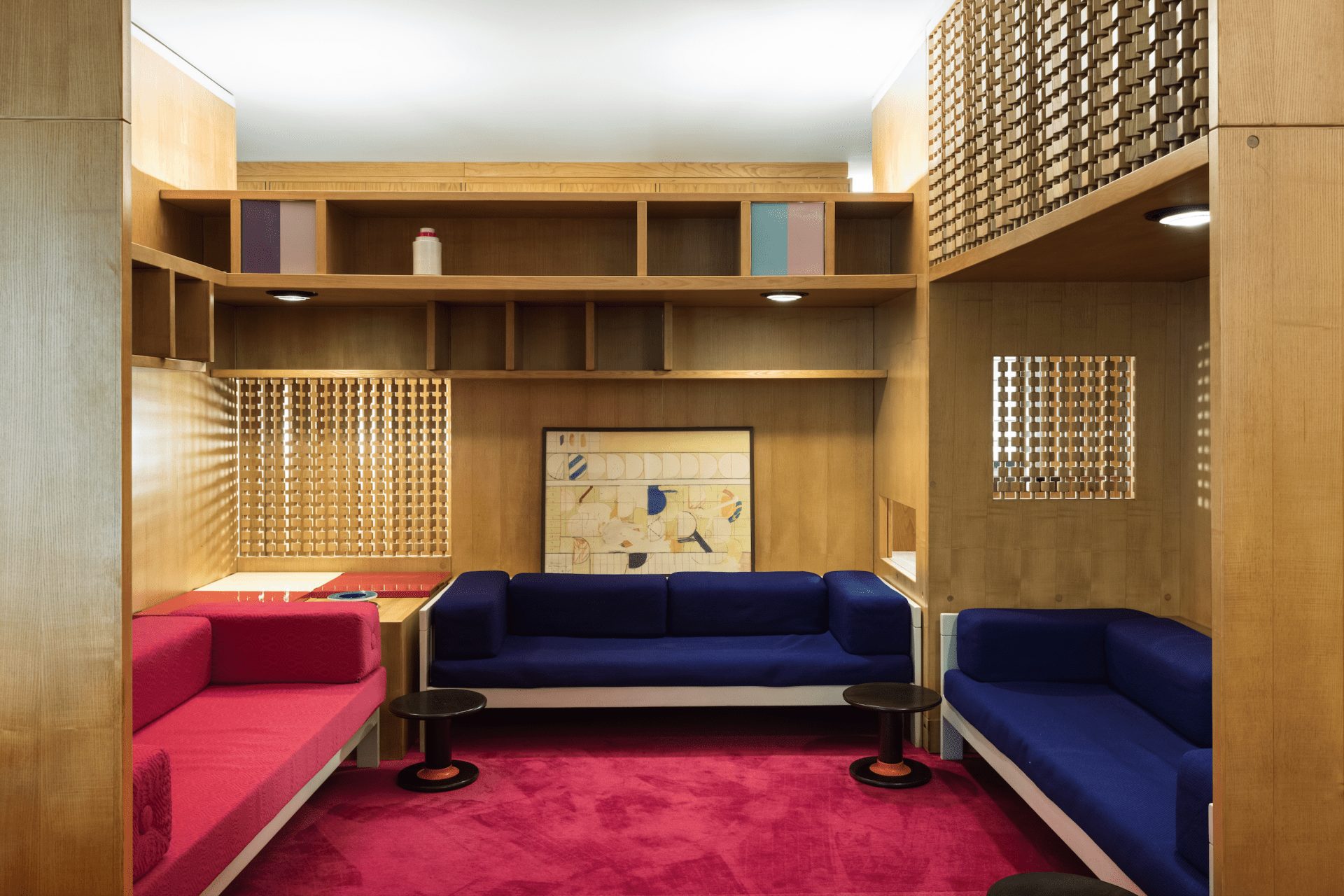
Designed by Ettore Sottsass for the lithographer and printer Giovanni Lana, Casa Lana reflects a faithful reconstruction of a ‘room within a room’
The wooden bridge signals a change of pace: a departure from the sun-lit rooms of the Triennale Milano annex and an entrance into the saturated red and blue home of Palazzo dell’Arte where the permanent display of Casa Lana resides, a faithful rebuilding of the private residence designed by Ettore Sottsass for the lithographer and printer Giovanni Lana.
“Today, Triennale Milano is giving the world a wonderful surprise: the reconstruction of a part of Ettore Sottsass’s Casa Lana, a ‘room within a room’ that Triennale has dismantled and reassembled exactly as it was through the assistance of Iskra Grisogono of Studio Sottsass and the conversations with the family of the original owner,” comments Stefano Boeri, President of Triennale Milano.
“Milan is now home to an authentic time machine, created by one of the international geniuses of the twentieth century.”

Casa Lana opens its doors to the public, thanks to the donation of Barbara Radice Sottsass. Its blueprint stems from a thorough study of the Triennale Milano archive and restoration center which Luca Cipelletti, among others, reviewed and oversaw.
Along with Casa Lana, a series of exhibitions are on display, curated by Marco Sammicheli with installation design and graphics by Christoph Radl. “Starting from the narrative ideas of the Casa Lana, we thought up a series of exhibitions that would examine some of the major themes of the great master’s work,” shares Sammicheli, Director of the Triennale Milano Museo del Design Italiano.
Inside Casa Lana, plush red carpet cloaks the entire flooring, a sense of elegance invoked from the onset. The convex-shaped vanity table on the left anchors a bowl-shaped vase filled with pink and white flowers, and a life-size mirror by the table doubles the size of the interior.

Extra details lend the space an aura of home: the yellow circles injected into the wall to hang the coats on; the abstract paintings of a pyramid, relics of Asian religions, and an attempt to replicate Michelangelo’s artistry with a note “Ciao Michelangelo”; and the cues of wood as the dominant fixture in place.
Proceed to the main area, and three sofas shall greet the visitors, enclosed in space barricaded by floor-to-ceiling panels. The design crams a myriad of abacus into the holes of the walls, allowing air to trespass between the areas.
As visitors sit on the sofa, wooden shelves shelter their heads and the bursts of warm light invite them to swap stories after a bout of a workday, sipping on red wine to loosen up. In a corner, the flimsy white curtains sway and filter the mimicked natural light coming off from the installed LEDs.

When Ettore Sottsass penned an article about Casa Lana in 1967, he noted how these spaces, where the activities of everyday life occur, had been constructed for a purpose: to embody their certain functions while, at the same time, engineering a sense of wholeness and a legion of grandiosity in a quaint space.
Contrary to the architect’s identification of ‘a room within a room’, Casa Lana defies this statement. It dispels being just a room, but emerges as a token of history, the arrival of heritage indelibly ingrained in the den of Triennale Milano.
Images by Gianluca Di Ioia

























